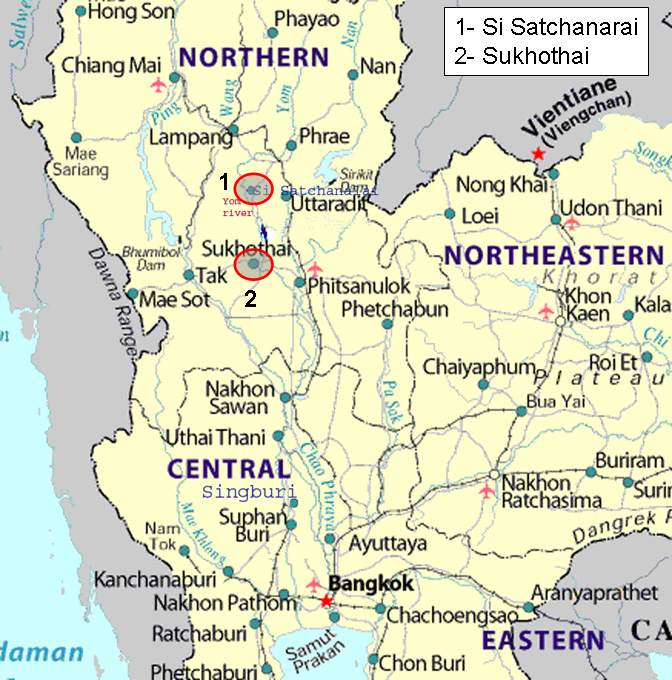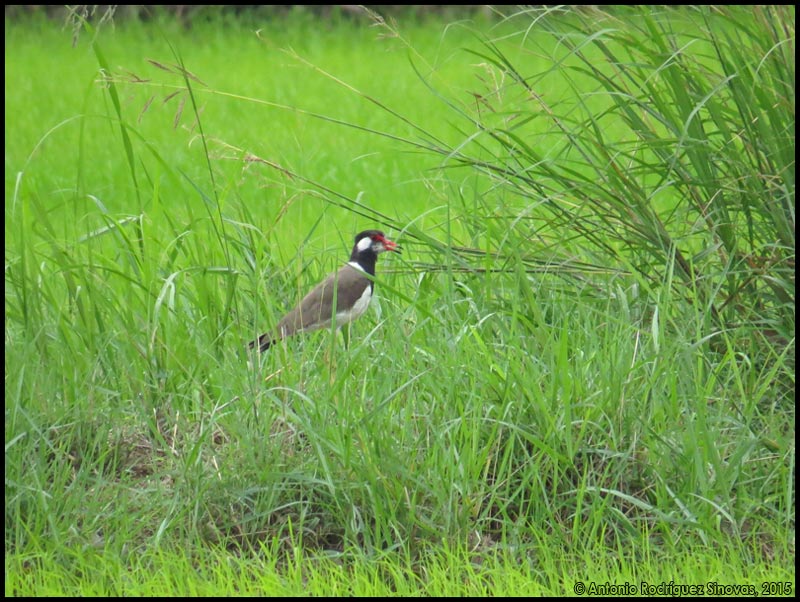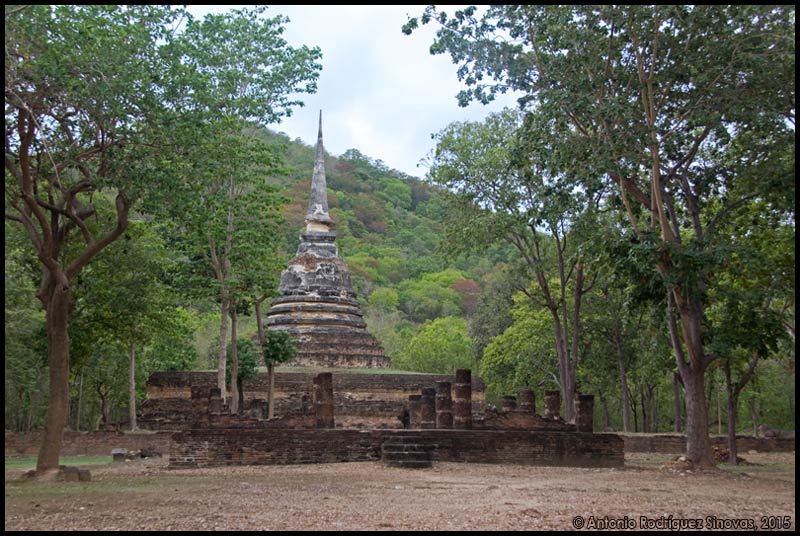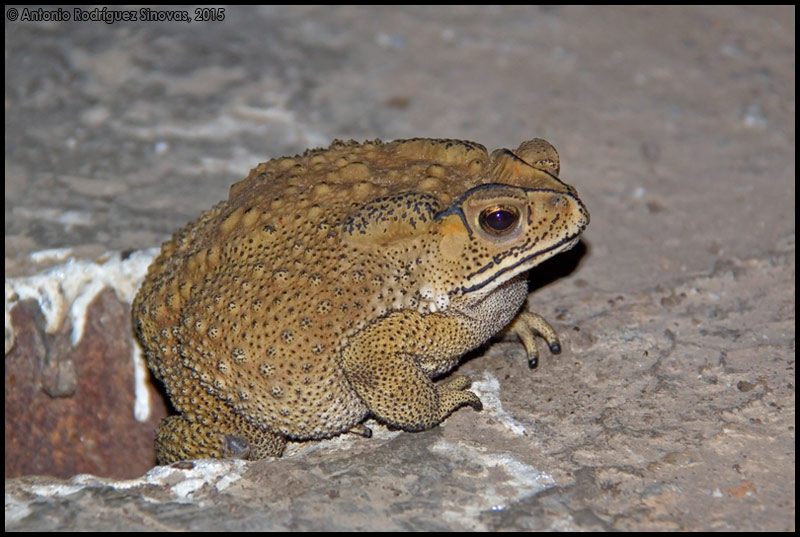La crónica de viaje de eBird, junto con el mapa de las principales zonas visitadas y la lista de aves observadas en Tailandia, puede encontrarse en este enlace.
The eBird trip report, showing a map with the main visited locations, together with the complete list of bird species seen in Thailand, can be seen in this link.
Tras la visita a Chiang Mai decidimos alquilar un coche durante 8 ó 9 días para tener un poco más de libertad. La conducción no fue difícil (al menos fuera de las ciudades), eso sí, siempre guiados por un GPS al que introducíamos las coordenadas geofráficas del punto a donde queríamos llegar (mejor las coordenadas que la dirección en si misma, ya que a veces son un poco difíciles de indicar). Las carreteras principales están en buen estado, y la única dificultad es que en las autopistas pueden hacer giros en U y a veces ves por el arcén motos circulando en sentido contrario. Pero si vas un poco atento no hay mucho problema. Tras unas 3 horas y media llegamos al Si Satchanalai Historical Park, nuestra primera visita del día, y después de otra hora y media alcanzamos Sukhothai, donde pasamos 2 noches. Se recomienda visitar ambos parques en coche o en bicicleta (que se alquilan en la entrada de ambos parques), ya que son bastante grandes. Esperaba con ansia la visita a Sukhothai, puesto que sabía que detrás del hotel había buenos campos de arroz que seguro me permitirían ver un buen número de especies. Y así fue, hasta 48 puede ver entre dichos campos y el parque histórico propiamente dicho.
From Chiang Mai we rented a car for 8-9 days to be free to move were we want. Driving in Thailand is not difficult (at least outside the cities). We moved always using a GPS with geographical coordinates (better than the address). Main roads are well maintained, and the main difficulty is that in the freeways it is possible to make U-turns and sometimes motorcycles move in the opposite direction using the road shoulder. But if you pay attention to both, driving is easy. After 3.5 hours driving from Chiang Mai we reached the Si Satchanalai Historical Park, our firt visit during the day, and then we moved to Sukhothai (1.5 hours more) where we spent two nights. It is recommended to visit both parks by car or bicycle (rented at park entrance in both locations), as both occupy a vast area. I knew that rice fields were in the rear part of our hotel, and I expected to see some species there. And this was the case. I managed to see 48 bird species in the rice fields together with those seen in the historical park.
1. Si Satchanalai Historical Park.
Si Satchanalai fue fundada en 1250 como la segunda ciudad vasalla del reino de Sukhothai y como residencia del príncipe real durante los siglos XIII y XIV. Las ruinas se encuentran rodeadas por selva, campos de arroz y un cercano río, lo cual permite ver diversas especies. Entre los árboles, pude disfrutar de una gran colonia de garcetas comunes, garcillas bueyeras y martinetes. En vuelo, un grupo numeroso de picotenazas asiáticos y aquí vi mi primer alción de Smirna.
Si Satchanalai was founded in 1250 as the second center of the Sukhothai Kingdom and a residence of the crown prince in the 13th and 14th centuries. Ruins are surrounded by jungle, rice fields and a river. This allow observation of several species. In the trees there was a colony of little egrets, cattle egrets and black-crowned night-herons. Lots of asian openbills flew over the city, and here I saw my first white-breasted Kingfisher.
2. Sukhothai.
El parque histórico de Sukhothai reúne los restos arqueológicos de la capital del reino de Sukhothai, de los siglos XIII y XIV. Es, junto a la ciudad de Si Satchanalai patrimonio de la humanidad. Sus ruinas la forman los restos de distintos palacios y templos, rodeados de jardines y canales.
The Sukhothai Historical Park contains building remains from the capital of the Sukhothai kingdom, between 13th and 14th centuries. Together with Si Satchanalai, it is a World heritage site. The ruins are composed of old palaces and temples, surrounded by gardens and channels.
Pero antes de visitar el parque, la misma tarde de nuestra llegada la dediqué a visitar los campos que había detrás de nuestro hotel. Eran campos de arroz, con árbolado disperso y pequeñas charcas. Este conjunto permitía una gran variedad de aves, tal y como se ve en las fotos inferiores.
But before our visit to the park, I enjoyed a little bit with the fields located near to our hotel. These were rice fields, with scattered trees and some small ponds. This allowed a high bird diversity, as can be seen in the pictures shown below.
Las ruinas de Sukhothai la componen un sinfín de templos y palacios, por lo que, dado el tiempo del que disponíamos, nos limitamos a visitar los más importantes. Son justamente los que aparecen en las fotos. Para el que quiera disfrutar de la tranquilidad, la zona norte, donde se encuentra el Wat Chedi Ngam que aparece más abajo, es interesante, ya que aparece rodeada de selva. De todas formas, es posible ver aves durante todo el recorrido, como cormorán de Java o abejaruco esmeralda oriental.
Sukhothai remains are composed by lots of temples and palaces. Thus we visited only the main buildings, represented in the pictures below. The north area (where the Wat Chedi Ngam shown below is located) is a peaceful site, where you can enjoy with the jungle. Anyway, it is possible to see some birds between the ruins, as little cormorant or asian green bee-eater.
Finalmente, nuevas visitas a los campos de arroz permitieron completar la lista de especies observadas, incluyendo tejedor dorado asiático o suirirí de Java.
Finally, new visits to the rice fields allowed to complete the list of birds species observed, including asian golden weaver or lesser whistling-duck.
Lista de aves observadas / Bird species observed:
Lesser Whistling-duck - Dendrocygna javanica - Suirirí de Java - X
Cotton Pygmy-goose - Nettapus coromandelianus - Gansito asiático - 6
Rock Dove - Columba livia - Paloma bravía - X
Red Turtle-dove - Streptopelia tranquebarica - Tórtola cabecigrís - 6
Zebra Dove - Geopelia striata - Tortolita estriada - 8
Himalayan Swiftlet - Aerodramus brevirostris - Salangana del Himalaya - X
Asian Palm-swift - Cypsiurus balasiensis - Vencejo palmero asiático - 3
White-breasted Waterhen - Amaurornis phoenicurus - Gallineta pechiblanca - 2
Asian Openbill - Anastomus oscitans - Picotenaza asiático - X
Cinnamon Bittern - Ixobrychus cinnamomeus - Avetorillo canelo - 3
Black Bittern - Ixobrychus flavicollis - Avetorillo negro - 3
Black-crowned Night-heron - Nycticorax nycticorax - Martinete común - X
Javan Pond-heron - Ardeola speciosa - Garcilla indonesia - 1
Cattle Egret - Bubulcus ibis - Garcilla bueyera - X
Great White Egret - Ardea alba - Garceta grande - 4
Little Egret - Egretta garzetta - Garceta común - X
Little Cormorant - Microcarbo niger - Cormorán de Java - 2
Red-wattled Lapwing - Vanellus indicus - Avefría india - X
Green Sandpiper - Tringa ochropus - Andarríos grande - 2
Asian Green Bee-eater - Merops orientalis - Abejaruco esmeralda oriental - 6
Indochinese Roller - Coracias affinis - Carraca indochina - 1
Pied Kingfisher - Ceryle rudis - Martín pescador pío - 2
White-breasted Kingfisher - Halcyon smyrnensis - Alción de Esmirna - 1
Indochinese Bushlark - Mirafra erythrocephala - Alondra Indochina - 4
Barn Swallow - Hirundo rustica - Golondrina Común - X
Sooty-headed Bulbul - Pycnonotus aurigaster - Bulbul Ventridorado - 2
Streak-eared Bulbul - Pycnonotus blanfordi - Bulbul de Blanford - X
Oriental Magpie-robin - Copsychus saularis - Shama Oriental - 1
Pied Fantail - Rhipidura javanica - Abanico Pío - 6
Common Tailorbird - Orthotomus sutorius - Sastrecillo Común - 1
Plain Prinia - Prinia inornata - Prinia Sencilla - 2
Zitting Cisticola - Cisticola juncidis - Cistícola Buitrón - 3
Golden-headed Cisticola - Cisticola exilis - Cistícola Cabecidorado - 4
Olive-backed Sunbird - Cinnyris jugularis - Suimanga Dorsioliva - 1
Scarlet-backed Flowerpecker - Dicaeum cruentatum - Picaflores Dorsirrojo - 1
Long-tailed Shrike - Lanius schach - Alcaudón Schach - 3
Ashy Drongo - Dicrurus leucophaeus - Drongo Cenizo - 1
Black Drongo - Dicrurus macrocercus - Drongo Real - 1
Ashy Woodswallow - Artamus fuscus - Artamo Ceniciento - X
Large-billed Crow - Corvus macrorhynchos - Cuervo Picudo - 5
Black-collared Starling - Gracupica nigricollis - Estornino Cuellinegro - 6
Asian Pied Starling - Gracupica contra - Estornino Pío - X
Great Myna - Acridotheres grandis - Miná Grande - X
Common Myna - Acridotheres tristis - Miná Común - X
House Sparrow - Passer domesticus - Gorrión Común - X
Eurasian Tree Sparrow - Passer montanus - Gorrión Molinero - X
Asian Golden Weaver - Ploceus hypoxanthus - Tejedor Dorado Asiático - 8
Scaly-breasted Munia - Lonchura punctulata - Capuchino Punteado - X










































